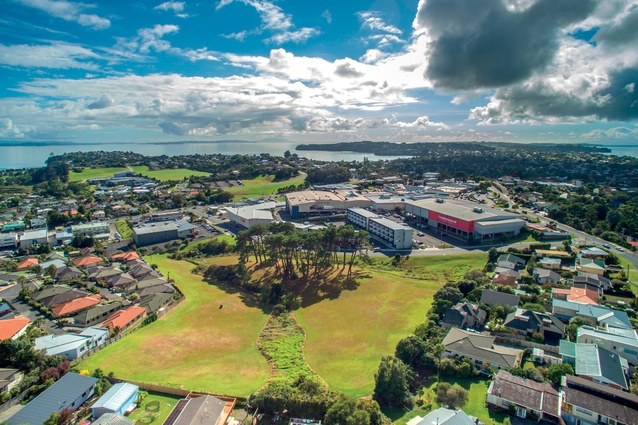Building better communities
The newly formed Panuku Development Auckland has been tasked with identifying council-owned land, as well as privately owned brownfield sites, that can be freed up for mixed-use and residential development.

There’s no doubt Auckland is a great place to be, especially at this time of year. With its stunning landscapes and beautiful harbours, not to mention its buoyant economy, Auckland offers a lifestyle that has become extremely attractive in recent years. As a result of its popularity we are seeing the region having to plan and deal with an unprecedented level of growth.
To accommodate this degree of expansion and continue to offer the way of life that has made our largest city so attractive in the first place, we need to think and do things in a different way as the reality is public finances and land are finite.
To date there’s been some very good planning work done by former councils, while communities have told us what they want also, through their Local Board plans and the Auckland Plan. However, we have all struggled coming up with the innovative solution and implementing it in a timely manner.
At Panuku Development Auckland we see this as both our challenge and our opportunity. For the first time in years we have a chance to generate real momentum with urban locations and brownfield development, thanks to a specialist mandate and the oversight of council’s $1 billion property portfolio.
Urban development authorities are widely used in Australia, the United Kingdom, Hong Kong and in parts of the United States, and significantly this is the first time an agency like ours has been set up in New Zealand. The Productivity Commission’s draft report on housing released in the middle of last year highlights the role these authorities have in large-scale regeneration, renewal or development projects.
At Panuku we see our role as being that of catalyst – to navigate barriers that have prevented developments taking place in the past and to create new opportunities in a collaborative manner with other landowners. Collaborating is fundamental to the way forward. Partnerships with iwi, private landowners and the Crown must occur if we’re to realise the growth required.
Together we must strive to achieve a holistic and integrated approach. Common ground and mutual commercial interests when it comes to developing our urban centres need not be as elusive as is sometimes perceived. Through proper engagement and acknowledgement of different positions and financial expectations, a greater public good can be achieved because, by and large, all Aucklanders, regardless of their line of work, have a vested interest in how the city develops.
The first step in our journey has been to identify the locations that are considered appropriate for this type of approach. This has been an illuminating process revealing just how much potential there is in urban centres across Auckland. Each space and place has its own unique opportunities and issues, and to assist in the selection process Auckland Council and Panuku have considered the following key criteria:
- critical mass of Council land holdings (scale)
- ability to stage quicker wins with long-term goals (impact)
- partnership opportunities, particularly with the Crown, but also within the Council family
- ability to leverage off previous public and private investment and consider future investment
- commercial proposition of the site and market attractiveness
- access to public transport.
Based on these criteria, a final list of urban locations was approved by our shareholder, Auckland Council at the end of last year and at the top of the list are Manukau and Onehunga. These locations can potentially undergo a transformation similar in scale to the award-winning regeneration of the Wynyard Quarter, while retaining their unique identity so that the collective aspirations and needs of their communities are achieved.
In Manukau, Panuku will work with central government to create more housing, including affordable housing located close to employment opportunities. We will also make better use of Council-owned sites in the centre – all of which will leverage off existing investment in the area.
In Onehunga, Panuku will use available land holdings in the town centre, along with the Onehunga Port in the future, to attract and enable developers to build high-quality, mixed-style housing close to public transport and the water’s edge. Changing the port to allow for more public use is seen as the key to unlocking the economic, recreational and transportation-based potential of the Manukau Harbour. There is also an opportunity to work with the government on more housing in the wider area.
In addition to the major transformations of Manukau and Onehunga, town centres in Northcote, Takapuna and Henderson have also been approved for revitalisation, with Panuku working with government and private developers to unlock the full business potential of these locations.
All these larger-scale transformative and development opportunities will deliver a strong pipeline of business for the construction industry as well as an injection into the local economy, all be it in the longer term, as there will need to be a period of community engagement, planning and groundwork first.
The next step sees us producing high-level project plans for the selected locations which will outline agreed outcomes for each area, scope and mandate required to to achieve key objectives. These are expected to be created by the middle of this year, at which time we’ll also have a better idea where the specific investment opportunities are and the process of identifying specific projects will occur.
In the meantime, there will be other council-owned sites Panuku will be bringing to the market in the short term, to support housing demands. While we will be taking a more hands-off approach to such opportunities relative to the larger-scale projects, design quality and alignment to community outcomes will still be key imperatives for any developer with whom we partner.
So that’s a broad outline of our future activities planned and under way for Panuku, having been recently born out of a merger of two former CCOs Waterfront Auckland and Auckland Council Property Ltd. In addition, Hobsonville, Ormiston, Papatoetoe and Tamaki are just some of the existing locations that Panuku is already involved in where housing and public realm revitalisation is occurring.
Panuku also has a critical role managing Auckland Council’s property portfolio, which we continuously review to find better ways to generate income for the region, grow the portfolio or release land or properties that can be more appropriately used by others.
All in all, 2016 heralds another a big year for the development and construction industries. Feeding into that, I know all of us at Panuku are looking forward to the challenge of helping create development opportunities in brownfield locations and shaping spaces for Aucklanders to love.
Through this journey, there is also the potential to demonstrate the value of urban development authorities nationally. If we can start catalysing development across the Auckland region at the scale I know we’re capable of, there’s every reason for other cities around New Zealand to adopt what we have learnt to their own particular circumstances, challenges and opportunities.










